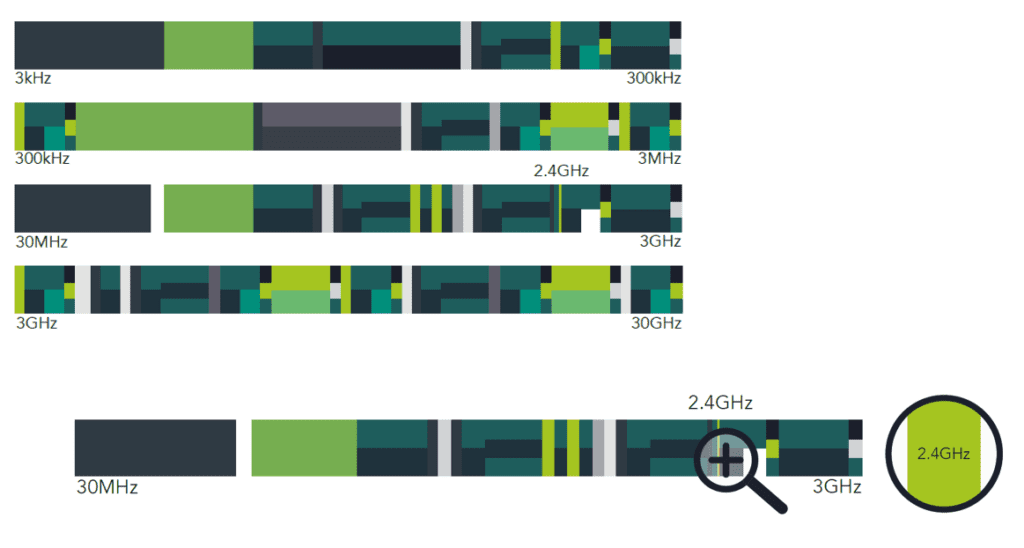
The frequency spectrum is fundamental to understanding wireless communication as it is used by all the billions of wireless devices operating around us. But the crazy thing is, this multitude of wireless products are only allowed to utilize a tiny fraction of the frequency spectrum, making it an extremely crowded space. It’s time to start thinking of frequencies as a limited natural resource!
The global surge in wireless devices is showing no sign of slowing down and as this growth intensifies, it poses serious challenges for reliable communication, most notably in the overcrowded 2.4GHz band. Common wireless standards like Thread and Bluetooth struggle to break through the noise and while they use various methods to enhance reliability, they often fall short due to rigidity and limited adaptability.

Cognitive Coexistence
LumenRadio’s patented Cognitive Coexistence technology is the foundation of our wireless technology offering and the main reason why we are the most reliable connectivity solution on the market today.
Compared to normal wireless systems, Cognitive Coexistence is much smarter and much more effective at making use of the gaps on the narrow 2.4GHz frequency.
It does so by constantly adapting to changing conditions on the network. It measures the quality of channels, identifys which are the best to use and hops to the ideal channel when required.
This makes Cognitive Coexistence the technology of choice for business-critical applications as you can always be sure that it works – even in the most demanding and most crowded environments.



